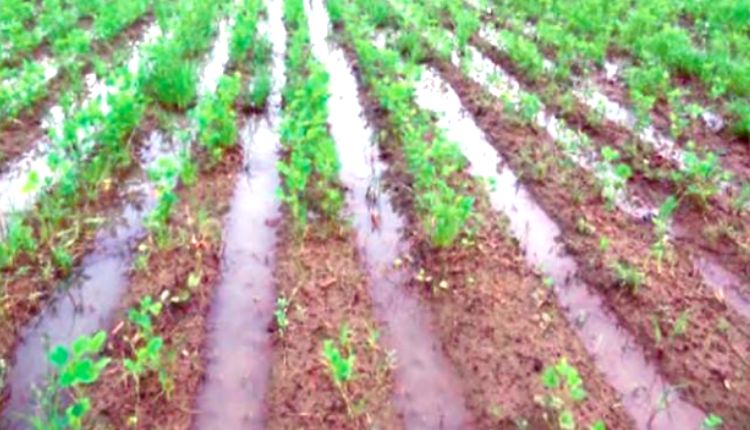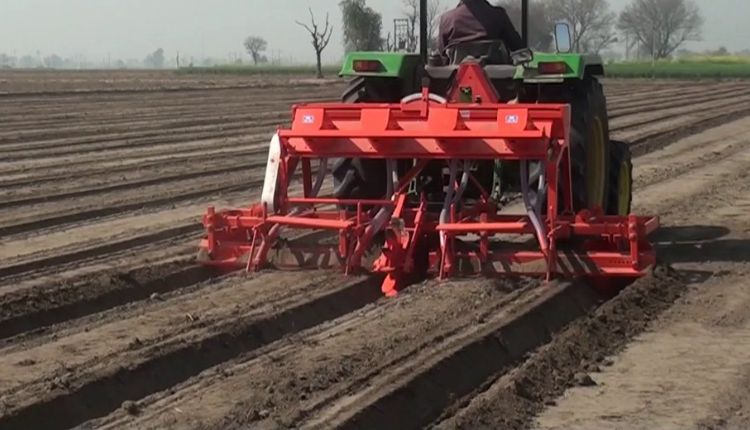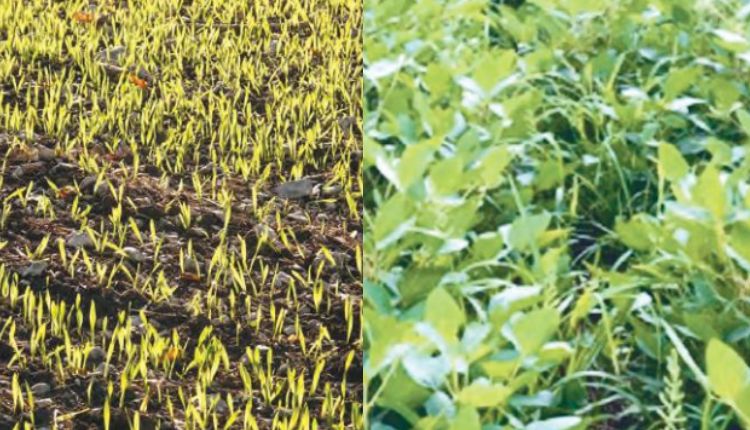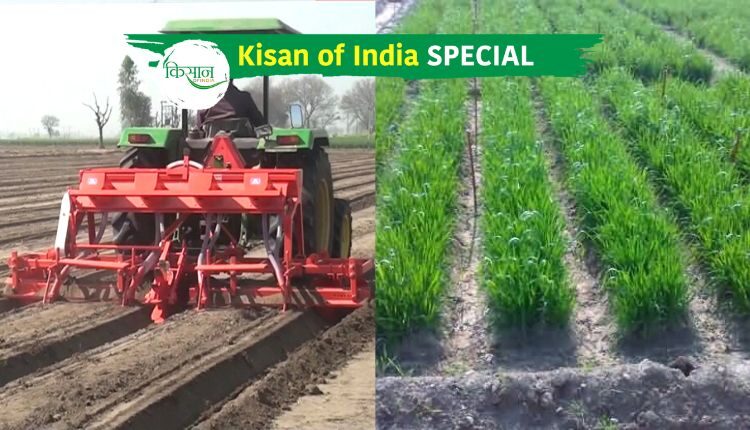Raised Bed Planter is useful to handle climate change challenges
Immediately adopt furrow and gutter method of sowing to increase earning in agriculture.
Raised bed planter is a boon for the cultivation of paddy and wheat. Unseasonal rains, droughts and short or excess rainfall caused by climate change have posed the biggest challenges to agriculture. To overcome this, all-round measures have been suggested by the agricultural scientists. One such method is the ‘furrow and groove method’ of sowing the crop. This technique should be adopted by every farmer immediately as it increases the crop yield by 20 to 25 percent. Cost of cultivation decreases as weed and pest infestation is less. Not only this, thanks to the furrow and gutter method, there is more rainwater conservation in the fields and the soil moisture is more sustainable.

Scatter method and climate change
According to the experts of Jawaharlal Nehru Agricultural University, Jabalpur, the crop requires 25-30 percent more irrigation than the traditional sprinkler or line sowing method. Not only this, the crops sown in this way also suffer a lot due to water logging during the rainy season. Plowing has to be done several times to make the soil friable before sowing by broadcast method. This significantly increases the initial cost of cultivation. Not only this, the germination of seeds is also relatively less and late in the spraying method. This gives less yield.
The outbreak of weeds and pests is also more in the field if sowing is done by sprinkle method. Whatever measures farmers adopt to overcome this, the cost of cultivation increases further. All these challenges become more painful when as a side effect of climate change, farming and farmers have to bear the brunt of drought or excess rainfall or unseasonal rains. This increases the risk of damage to the standing crop or further loss of yield. The amount of income that farmers get due to fall in yield also makes it difficult to recover the cost.
Low cost high income recipe
To save the traditional sprinkle method of sowing from high cost and double whammy of climate change, agricultural scientists developed the technique of sowing by furrow and groove method. For this, scientists have developed such a tractor-operated agricultural machine, which is used for furrow and furrow sowing. Its agricultural equipment is called Raised Bed Planter. Its price is around 20-25 thousand rupees. This machine was first used in the Yogi Valley of Mexico. It proved to be a boon for the cultivation of paddy and wheat.
Furrow and furrow sowing was introduced in India in 1991 for paddy and wheat crops in the Gangetic plains. It raised such flags of success that gradually this advanced technology was expanded in other crops as well. At present, this method is very popular in Madhya Pradesh in those areas where soyabean, urad, moong and pigeon pea are grown in medium to heavy soils in kharif.
How does Raised Bed Planter work?
This machine has 3-5 mould boards (phale) which turn the clay on both sides. This creates raised furrows and deep furrows in the soil. The raised furrow is levelled by the shaper and the seeds are sown on the furrow by the seed drill fitted in this machine. Raised bed planter does all this process in one go. To pull it, a tractor with more than 35 horse power is required. By using this, intermediate crops can also be taken on the furrows. This increases the productivity of the farm. With the help of raised bed planter, the previous bed can be reshaped without breaking it. This saves fuel, time and labour.

Management with Red Bed Planter
The crop does not get damaged even in the event of excessive rainfall if sown by furrow and gutter method. The drains made in this method, where on the one hand, in the case of low rainfall, develop a favourable area for the accumulation of moisture, while in the case of heavy rainfall, they become an excellent source of water drainage. That’s why many research institutes and agricultural universities of the country have certified that by sowing by furrow and furrow method, more production can be achieved in less time and cost.
For Kharif crops, farmers are specially advised to adopt this technique. So that the side effects of climate change on agriculture can be minimised. In fact, due to climate change and abnormal rainfall, the area under Kharif crops is decreasing as compared to Rabi crops in drought-prone areas like Bundelkhand. The yield of major kharif crops like soybean, urad and arhar have either stagnated or are declining. But if sowing is done by furrow and furrow method, then even in the condition of less or more rain, the moisture in the soil of the furrow remains for a longer time. This results in adequate seed germination and ultimately, higher yields.

Weed and Pest Management
Weed infestation is also very less in furrow and furrow method as compared to conventional sprinkler or line sowing, because during furrow formation the weeds standing on the soil surface go under the seeds. Due to this, the same weed seeds germinate, which are lying on the surface of the ground at a depth of one to one and a half centimetres. This does not require weeding and increases both yield and income.
Similarly, most of the insects that affect crops complete their life cycle on the upper surface of the soil. In sowing by furrow and furrow method, most of the eggs of insects are destroyed by deep sinking in the soil because of the height of the furrow, a relatively heavy pile of soil is formed over them. Hence, there is a reduction in the money, labour or cost of dealing with weeds and pests.
Contact us: If farmers want to share information or experiences related to farming with us, then they can do this by calling us on the phone number 9599273766 or by writing an email to [email protected] or by sending your recording. Through Kisan of India, we will convey your message to the people, because we believe that if the farmers are advanced then the country is happy.



